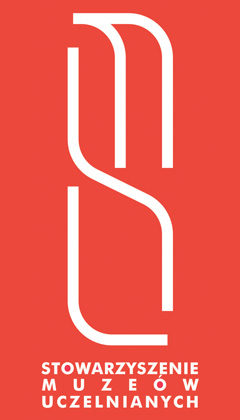Geological Museum, University of Szczecin
ul. Mickiewicza 16a
Room 101
70-383 Szczecin
Tel. (91) 444 24 26
muzeum@usz.edu.pl
www.geocentrum.usz.edu.pl/muzeum
Free admission
Mondays – Fridays:
9 am – 3 pm
Workshops, geology classes and guided tours for organized groups (advance booking is essential).
Director: Robert Woziński PhD
Staff: Dominik Zawadzki PhD
The Geological Museum of the University of Szczecin was established on 9 June 1994 on the initiative of Prof. Stanisław Musielak and Stanisław Piotrowski who was director of the museum until 2001. In the years 2001–2015, the museum was managed by Bernard Cedro who was replaced by Dominik Zawadzki who currently holds the position of
custodian. Since November 2016, the museum has been managed by Robert Woziński. The museum’s first seat was on university premises, in the offices of the rector (1994–2006). After moving several times, including to the basement of the Faculty of Natural Sciences at ul. Mickiewicza 18, the museum was finally transferred to a spacious area in the Interactive Hall of the Natural Sciences Education and Research Centre of the University of Szczecin. The museum’s new location was officially opened on 23 March 2017. The collection of the Geological Museum contains more than 6,700 specimens, including 1,128 fossils, 1,172 rocks, 822 minerals, 749 samples of beach and desert sand from nearly all over the globe, approx. 2,400 fossils, rocks and minerals from the collections of the National Museum in Szczecin, 406 Oligocene lenses and Szczecin nodules, 24 concretions, including polymetallic concretions from the Pacific Ocean floor in the Clarion-Clipperton fracture zone, 13 meteorites and tektites. The museum, which covers an area of approx. 350 sq. metres comprises several permanent and temporary geological exhibitions, such as: ‛Physical properties of minerals, igneous, sedimentary and metamorphic rock minerals’, ‛Mineralogy, chemical systematics of minerals’,
‛Petrography’, ‛Collection of sand samples from beaches and deserts across the globe’, ‛Fossilization’, ‛Systematics of organisms’ (fossils), ‛Seas and Oceans’ (contemporary specimens of ora and fauna), ‛Regional Geology’ (including Polish mountainous regions, specimens of rocks and minerals from the Sudeten Mountains, the Pieniny Mountains and the Tatra Mountains), ‛Geological History of the Baltic Region’ (the geological history of the region is presented on 16 boards, and each board is connected to rock specimens and fossils found in northern Poland and Scandinavia), ‛Geological History of Western Pomerania’ (including Oligocene fossiliferous concretions, the so-called Szczecin
nodules). The museum is also open to new technologies. Due to the implementation of the project ‛Retrotting of the Interactive Hall of Geoenvironmental Education of the Natural Sciences Education and Research Centre of the University of Szczecin’ co-financed by the Voivodeship Fund for Environmental Protection and Water Management
(Wojewódzki Fundusz Ochrony Środowiska i Gospodarki Wodnej, WFOŚiGiW), which was headed by Dominik Zawadzki, the museum has been equipped with interactive multimedia kiosks: ‛Fluorescent minerals’ (a UVA-, UVB- and UVC-illuminated display cabinet), one with palaeogeographic maps displayed on an interactive touchscreen, a
section with a stereo microscope and a microscope for viewing preparations as well as a Petrographic microscope, a Kaiserpanorama with 3D pictures of minerals, an educational game ‛Selected natural resources in Poland’, graphic board teaching resources enabling the identification of particular minerals, rocks and fossils. Owing to the project, the museum’s collections have gained a number of attractive mineral, rock and fossil specimens, including native silver from Morocco, a diamond encased in matrix and a Diplomystus annalis fossil fish from the Green River Formation in Wyoming, USA. The museum offers attractive educational programmes for organized groups (workshops, geology lessons, guided tours, nature-related films – the centre has a 38-seat cinema hall at its disposal). Periodical events
are held here, such as International Earth Day, Geographers Day, European Funds Day, St Barbara’s Day, etc.
The institution is a member of the West-Pomeranian Chamber of Tourism. Moreover, it has been entered in the Register of World Museums: K.G. Saur Verlag GmbH & Co. KG, Munich, Germany (Internal data code: 19001151; Subjects: geology, ecology, environmental protection).
Robert Woziński PhD












